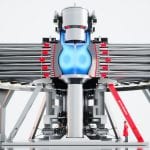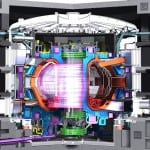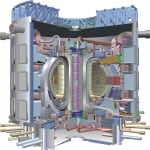Officials with the ITER project in France said work has started on the assembly of giant components needed for construction of an experimental nuclear fusion reactor, a project designed to demonstrate the scientific and technological feasibility of fusion energy for peaceful use.
The ITER group, in a ceremony July 28 that was broadcast online (see video below), marked the start of the machine assembly of the international experimental tokamak nuclear fusion reactor. Countries involved in the project include the United States, Russia, China, India, Japan, South Korea, and member states of the European Union, with a total of 35 countries participating. The project (Figure 1), being built in Cadarache, France, is expected to start up in 2035.
The project has had large budget overruns, as well as several delays as the partner countries have tried to coordinate financing and cooperation on technical issues. The exact price tag is not known, as participating countries have not divulged their commitments, but Bernard Bigot, the project’s director, on Tuesday said the estimated budget for the European Union is about 20 billion euros ($23.5 billion).
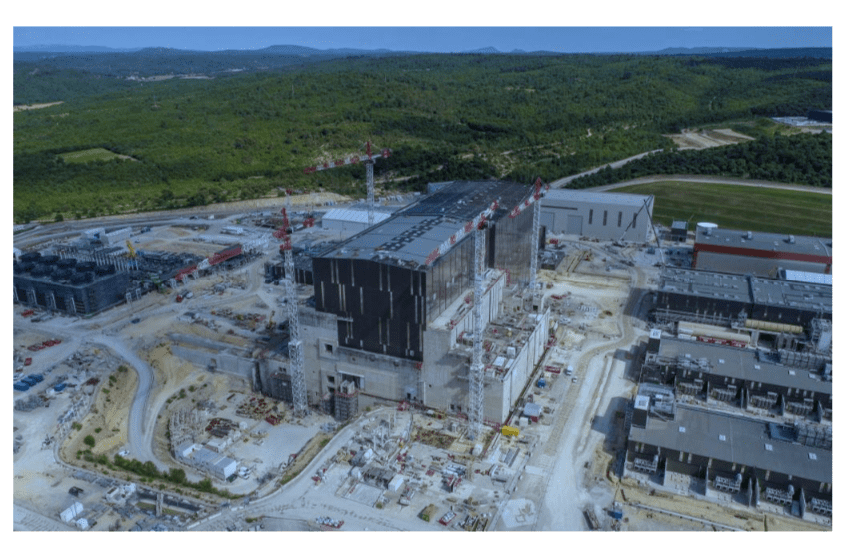
French President Emmanuel Macron, who took part in Tuesday’s ceremony, said, “When the United States, Russia, China, Japan, Europe, India and Korea contribute their best scientists and expertise for the common good, it is proof that what brings together people and nations is stronger than what pulls them apart.”
Project Launched in 2006
The ITER project was launched in 2006. Its original timeline called for a test of its first super-heated plasma by 2020, with full fusion by 2023. The experimental project is designed to generate power by combining atoms at a temperature of 150 million degrees Celsius. The process is similar to the nuclear fusion that produces the sun’s energy.
Components for the project, several of which weigh several hundred metric tons, have been arriving in France over the past few months.
Bigot, who has served as director of the French Commission for Atomic Energy, has said he expects first plasma in December 2025, which should prove the reactor concept works, and full power by 2035. He acknowledged Tuesday the challenges in meeting that schedule.
“Constructing the machine piece by piece will be like assembling a three-dimensional puzzle on an intricate timeline,” he said. “We have a complicated script to follow over the next few years.” Bigot, who led Tuesday’s ceremony at Saint-Paul-les-Durance, northeast of Marseille, said, “Clearly, the pandemic impacted the initial schedule,” noting slight delays caused by lockdowns associated with the coronavirus pandemic. He said none of the on-the-ground staff has contracted COVID-19.
Bigot on Tuesday conducted a virtual tour of the site. He also spoke at the ceremony alongside government representatives of other participating countries, including Rosatom General Director Alexey Likhachev, who read an address prepared by Russian President Vladimir Putin and shared with POWER. “ITER, which is the largest international scientific and technical project in history, is a vivid example of efficient and mutually beneficial multilateral cooperation,” said Likhachev, who directs the Russian state-owned nuclear company’s activities. “As you know, Russia is one of the founding countries of this initiative that aims at making a significant contribution to ensuring energy security of mankind and plays an active role in its implementation. The ITER project is based on the concept of the tokamak facility invented and developed in our country.”
The assembly and installation stage of a tokamak reactor is a considered a monumental event for the global scientific community. The ITER project is the world’s largest magnetic confinement plasma physics experiment. It is intended to reproduce the thermonuclear power of the sun on Earth for energy purposes. The ITER has been touted as a way to provide a reliable and efficient source of energy, potentially for millions of years. The reactor operates on the principle of nuclear fusion and requires seawater and lithium as raw materials for its fuel.
“Practical fusion energy will be one of the greatest achievements in human history, and ITER is a critical step on the road to get there,” said Tony Taylor, General Atomics (GA) vice president of magnetic fusion energy, in an email to POWER. “We are proud to be a part of this historic endeavor.”
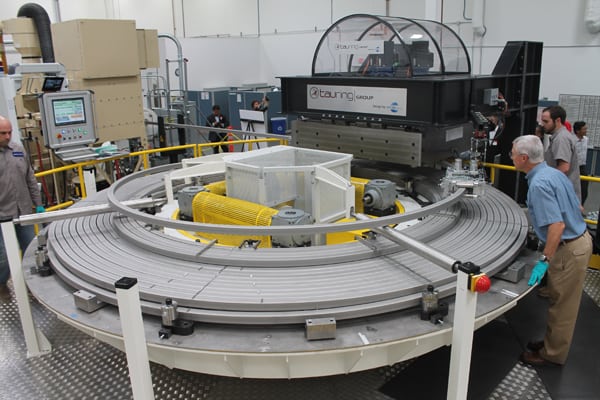
GA is contributing to the ITER project in several ways, including with its research at the DIII-D National Fusion Facility in San Diego, California. GA operates that site as a national user facility for the U.S. Department of Energy’s Office of Science. DII-D is the largest magnetic fusion research facility in the U.S., and has been part of many scientific discoveries that informed the design and operation of ITER.
Central Solenoid a U.S. Contribution
GA also is fabricating the ITER Central Solenoid (Figure 2) at its Magnet Technologies Center in Poway, California. The 59-foot-tall Central Solenoid when completed will be the largest pulsed superconducting magnet ever built, operating at temperatures of 4K (Kelvin)—near absolute zero, or about minus 270C—and driving 15 million amperes of current into the ITER tokamak to heat and stabilize the plasma. GA also is constructing several ITER technical systems, including diagnostic devices, and doing theoretical physics research to support the project.
Components for ITER have been produced by its supporting countries, in part as a way to contribute in kind to the project. Components, such as those from GA, are being manufactured in national laboratories and factories, then shipped to France for final assembly.
Rosatom’s Likhachev said that the start of assembly is a major event for the entire fusion community and for all of science. “It is important to note that despite the restrictions caused by the coronavirus epidemic the assembly and installation works start as scheduled,” he said. “The main task for all of us now is to ensure timely completion of the installation and assembly and to obtain the first plasma by the end of 2025. This will allow us to demonstrate in practice the concerted action on the part of all the project participants and the resultant effectiveness of our international cooperation.”
—Darrell Proctor is associate editor for POWER (@DarrellProctor1, @POWERmagazine).








